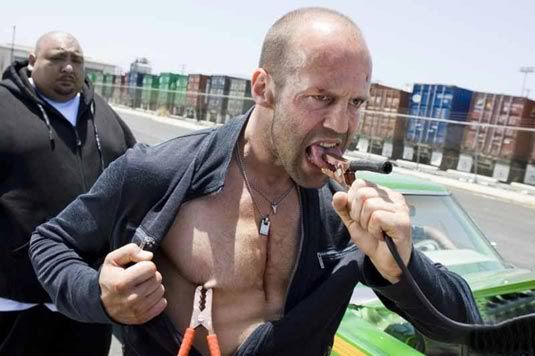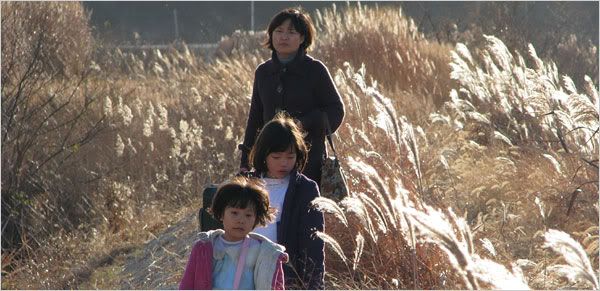Crank: High Voltage

Crank High Voltage, Neveldine/Taylor. [F] april 20th, (lol) 2009.
I was actually looking forward to seeing this. See, Crank was an aggressively stupid movie, but there was something clever about the way it pursued that platform; it was visually inventive, occasionally bold in its provocations, and most importantly it seemed to possess a sense of tongue in cheek self-awareness that diluted its more irredeemably repulsive moments and enhanced its often funny attempts at genuine humor.
The entire movie played out as self-parody, a replica of spastic action movie tropes taken to their grotesque extreme, resulting in a sort of blackly comic reflection of the genre it was trying to embody - and the mindset that sustains it - taking many cues from television commercials and video games as well. A man who can only stay alive by constantly upping his adrenaline – it’s not subtle, but it’s clever, it turned the film into a sort of ironic deconstruction of American machismo. Crank wasn't always consistently smart enough to carry this concept all the way to the end, but I admired its ambition and it had a few surprisingly interesting moments of pure cinema that enhanced its effect as well. Plus it wore its griminess on its sleeve, with Google Maps location transitions and crappy looking DV video that gave the whole film an endearing handmade feel. Having seen the second installment, I'm inclined to believe that it might’ve just been a fluke.
Even the concept of the second one is meaningless in comparison to the first: a plastic, electrically powered heart is placed in protagonist Chev Chelios’ (Jason Statham) chest and he is forced to constantly recharge it by exposing himself to extreme amounts of electricity. Crank High Voltage makes the mistake of assuming that the success of the first film was due to how whoaaaa craaaazy the whole thing was. Interesting, unique camera work and editing becomes incoherently fast and choppy, lazy and uninteresting. Jokes are entirely abandoned for the sake of accommodating unending strings of curse words shouted from the mouths of racial stereotypes in the same way that a ten year old would spit them out: meaninglessly, counting on the words’ inherent offensiveness to do all the legwork. I’m not moralizing here, there are multiple scenes where this literally happens, and it's more or less an embodiment of this film's entire approach. If you thought that the first film’s treatment of its female characters was questionable, prepare yourself for a movie that never passes up an opportunity to show a naked woman riddled with bullets.
This is what it would look like if the Scary Movie people decided to do a feature length parody of Crank. As a blatant cash grab, the film does a really bad job at delivering even more of the same. It’s a complete misreading of all the things that gave the first one merit and a celebration of all the things that weighed it down. As an action movie, it’s boring. As a comedy, it’s not funny. As a reflection of a worldview, it’s cancerous.
Labels: amy smart, crank, jason statham, neveldine taylor



